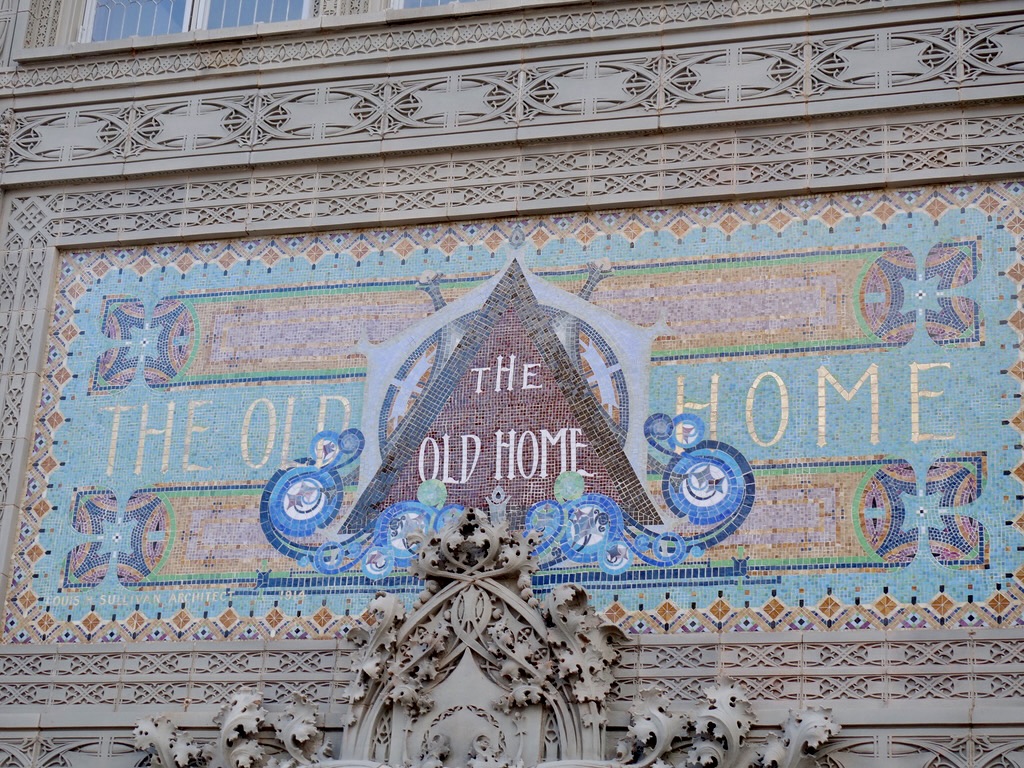The jewels in a downtown Newark landmark known for its “jewel box” architecture had lost their shine and sparkle.
Decades past its glory days as The Home Building Association banking offices in the early 1900s, its murals, mosaics and art-glass windows were chipped, cut and cracked as the building was altered over many years for use as a butcher shop, jewelry store and ice-cream parlor.
Yet, as outgoing president of the Licking County Foundation Connie Hawk put it, “Even in its deteriorated condition, it inspired.”
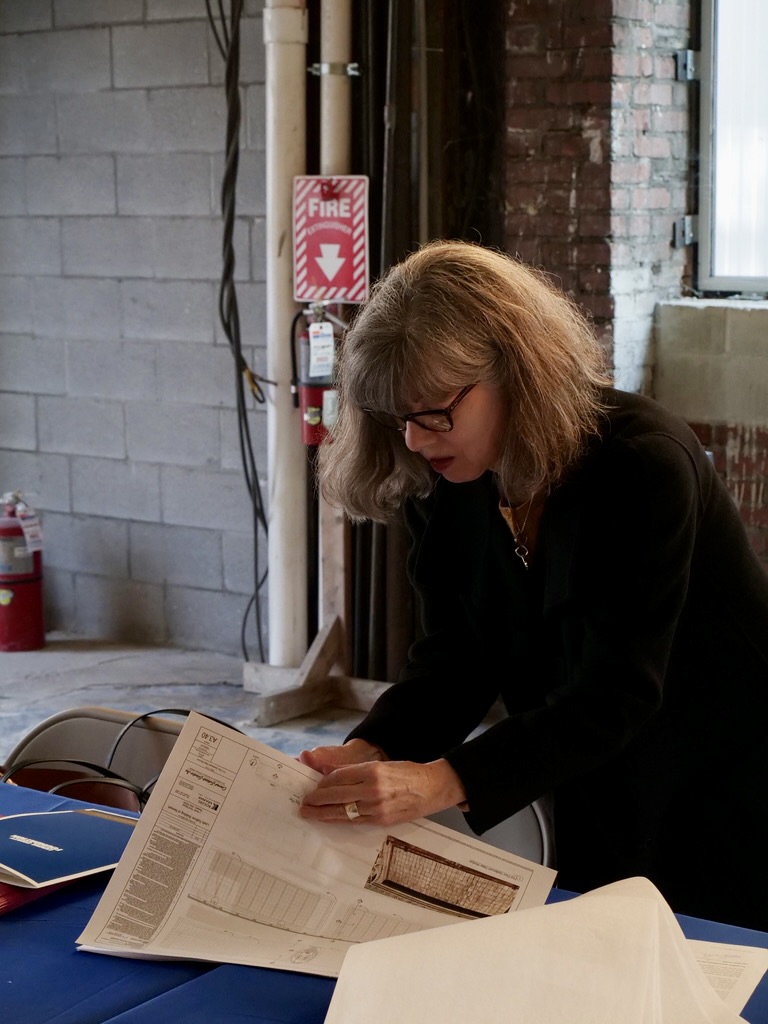
The basement, which extends far out from the building and under the public sidewalks on two sides, was wet and structurally unsound. The building’s plumbing and electrical systems were outdated. And it had sat vacant, deteriorating for nearly a decade.
In short, the future of this jewel in the downtown landscape was in question.
The building, now known as the Sullivan Building, after famed Chicago architect Louis Sullivan, was donated to the Licking County Foundation by Stephen Jones about a decade ago, and Hawk has since overseen the arduous restoration process.
When people who had only seen its architectural beauty from the outside had a chance to look inside, Hawk said, some audibly gasped as they took in the intricate geometric and Celtic-inspired artwork inside. It’s in rough shape in some spots, but it’s mostly intact – including wall-size murals that had been hidden from public view for decades.
“I love to see people react to it,” Hawk said. She has retired from her position as president, but she continues to lead the $14 million Old Home restoration project, which is expected to be complete in 2025.
When restored to its original glory – with modern conveniences such as an elevator and air conditioning – the building will be home to Explore Licking County, the local office that helps drive travel and tourism in the region.
How the Sullivan Building came to be
The “Old Home” savings and loan operated much like the “Bailey Bros. Building & Loan” in the Christmas classic “It’s a Wonderful Life,” including an accusation of embezzlement that resulted in the Old Home president being removed from his office overlooking Courthouse Square and being sent to the Big House for his crimes, Hawk said.
But that came long after he commissioned Sullivan, a mentor to prominent architect Frank Lloyd Wright and others, to design something very special.
The company wanted a building that would complement the historic Licking County Courthouse, built in 1876, and make a statement that would draw customers to the northwest corner of Main and 3rd streets.
The bank was built in 1914, and when it opened in 1915, it was unlike anything else in Newark.
Hundreds of pieces of terra cotta completed the facade, and opalescent windows shimmered in the sunlight, filling the rooms inside in a golden glow in the late afternoon. Coin-size mosaic tiles spelling out the bank’s name grace the front and south side of the building, identifying the structure as one of Sullivan’s eight Midwest “jewel boxes,” so named because they are boxy and bedazzled.
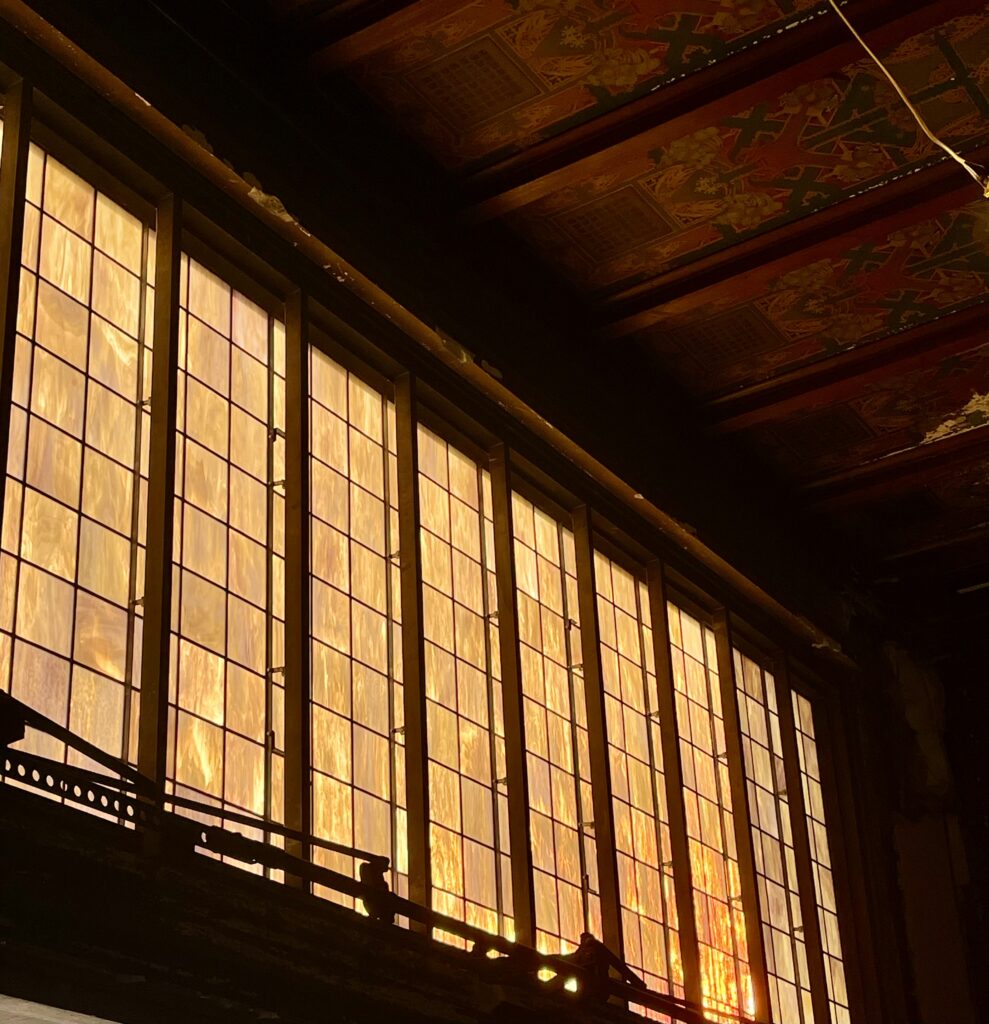
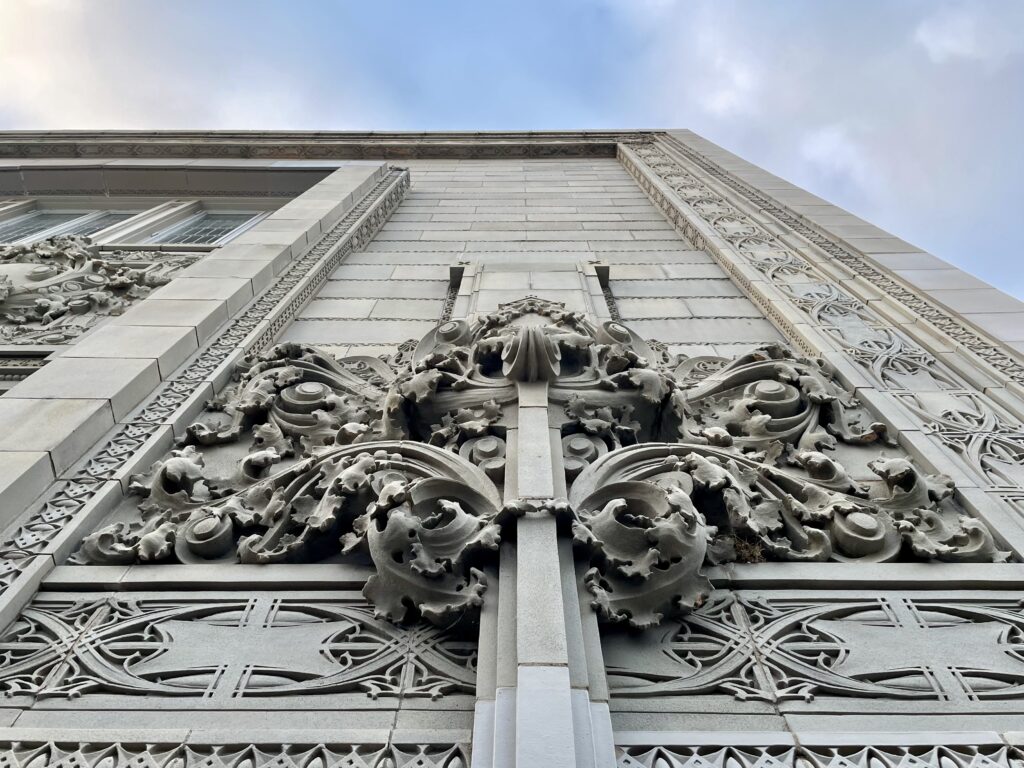
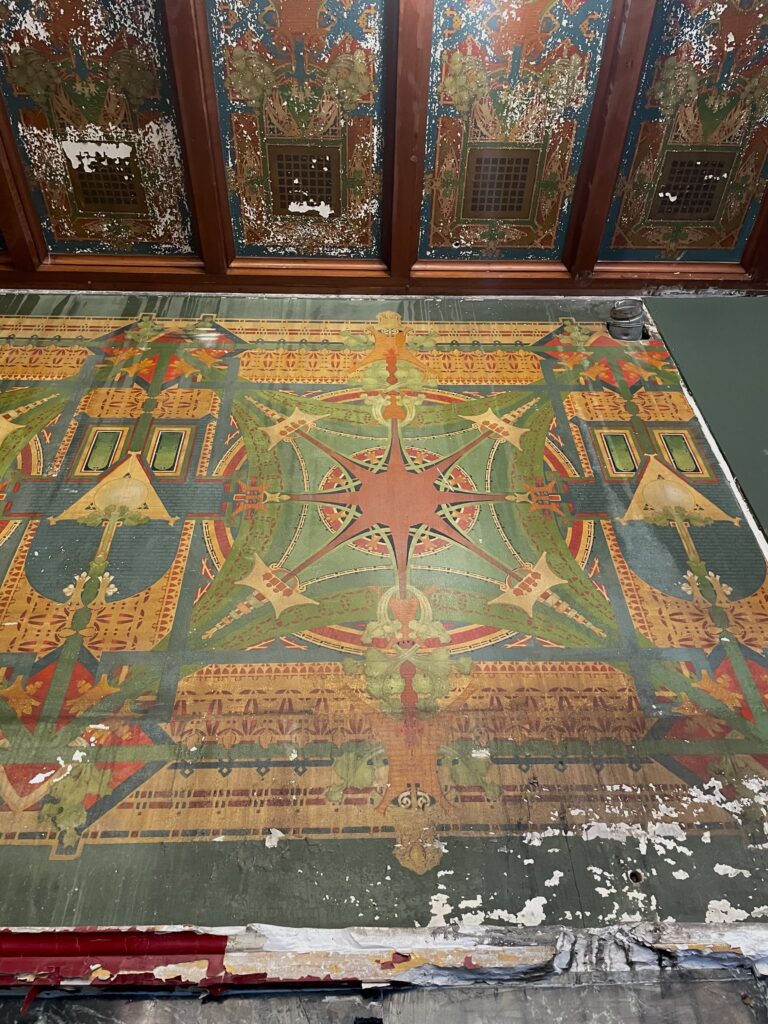
Even among the other jewel boxes, which are scattered about small towns in Iowa, Wisconsin, Minnesota, Ohio and Indiana, the Sullivan Building is unique for its terra cotta structure.
All of the jewel boxes were opened between 1908 and 1919, and most of them functioned as banks, save for the Henry Adams building in Algona, Iowa. A New York Times architecture critic wrote that, given that most of Sullivan’s buildings “were magisterial, these somewhat diminutive edifices were a departure for the architect late in his career.” The buildings are mostly small (between 1,500-4,600 square feet) and rectangular with many windows to allow natural light inside.
Despite their size, The Times wrote that these buildings are works of wonder and follow Sullivan’s famous edict, “form follows function.”
In the Newark building, every design choice served a purpose, Hawk said. The floors where tellers stood all day are finished in cork, which is more comfortable and ergonomic for all-day standing, and the floor for customers was made of marbled serpentine stone. The nearly one-story-tall windows in the main banking area could be opened like big louvers to allow significant air flow during warm months.
The top floor, with sweeping views of Courthouse Square, served as offices and, at times, apartments, while the basement was open to the public, offering safe-deposit boxes, lockers for storage and restrooms complete with showers.
And that’s where the restoration began, Hawk said.
Restoring the jewel box to its original glory
Revitalization has come in three phases, funded almost entirely by private donations and grants from organizations such as the Jeffris Family Foundation, an organization dedicated to the restoration and preservation of historic spaces throughout the Midwest.
Phase one started with the foundation and its troubled basement, which has a much larger footprint than the banking floor and upstairs offices and required significant reconstruction after it flooded years ago.
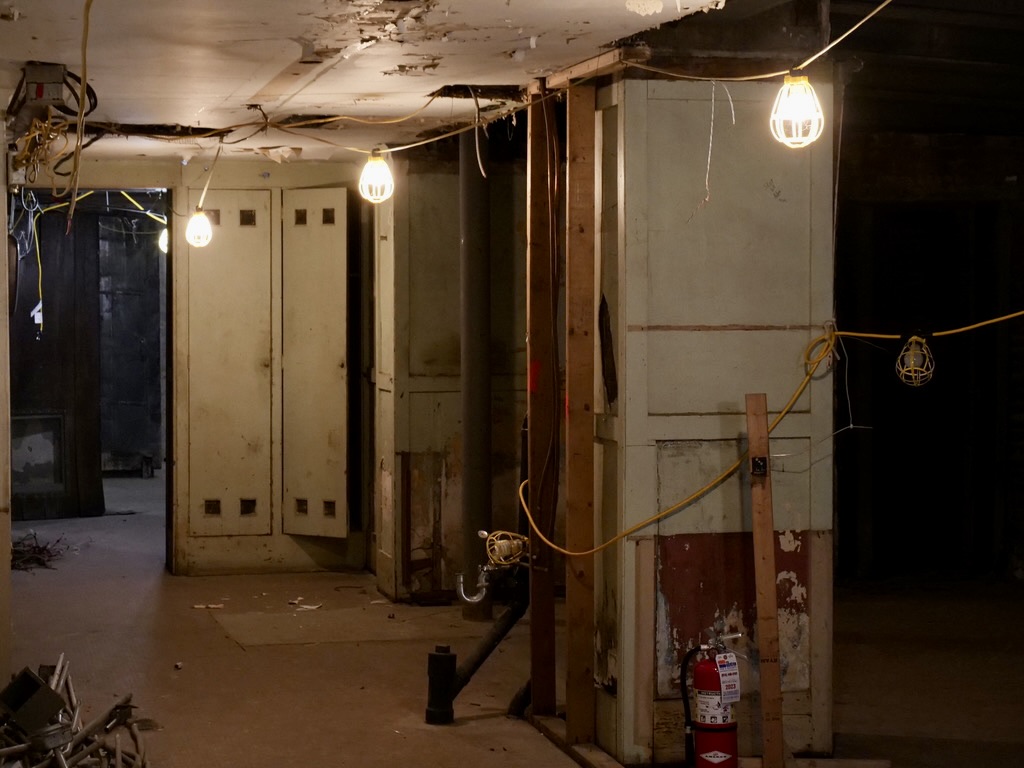
“Lots of beams had rusted and rotted,” Hawk explained. “We knew that was the first thing that we needed to handle.”
Today, it’s dimly lit and awaiting finishing touches, but it is dry and reinforced with new structural steel and concrete. Plans call for restoring the original mosaic tile floors and the restrooms.
Phase two, Hawk said, began with exterior restoration in 2019. The terra-cotta facade had weathered and had been damaged or changed over time, and at one point, a jeweler cut out parts of the exterior walls to install larger windows so that display cases would be visible from the street.
Between 2019 and 2020, Hawk and the Licking County Foundation worked with Wiss, Janney, Elstner Associates – one of two companies operating in the United States that still fabricates historic terra cotta – to recreate about 241 pieces of intricate tiles to replace those that had been damaged.
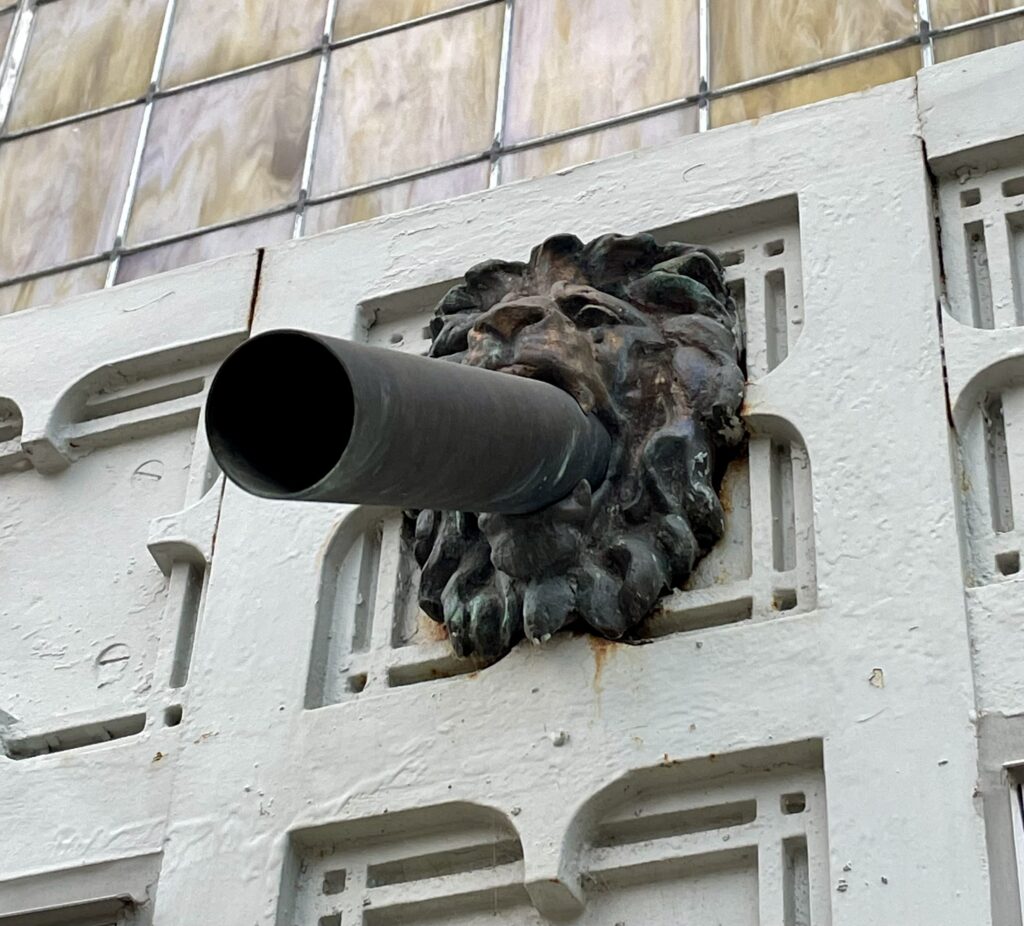
“One hundred years ago, they made terra cotta a lot differently than they do now,” Hawk said. “Because that terra cotta is iconic, and it is like one-of-a-kind, … getting those colors just right, that was big. … Quite a feat.”
The building’s unique “spitting lions” – cast bronze water spouts the shape of lions’ heads to drain water from rain gutters – also required restoration after layers of rust and paint hid their details. They’re one of Hawk’s favorite parts of the building.
“They’re whimsical and wonderful,” she said with a smile.
The third and final phase of restoration is the interior, beginning with the banking floor – the two-story public space. In the end, the building will showcase the living history of Licking County, while providing a public space for the community and an educational resource for the region.
History as a hub for tourism
The future of the Sullivan Building belongs to Explore Licking County and tourists who come here see the sights – including the jewel of downtown Newark. The tourism bureau will be the caretaker of the building, and like the original bankers of the early 1900s, their offices will be on the second floor.
The goal, Hawk said, was to keep the building a space for the community.
“The community has supported this building again and again and again,” Hawk said. “If we’re going to invite the public into this building, and we’re going to be raising your public and private dollars, we felt it was important that it was accessible to all.”
Dan Moder, executive director of Explore Licking County, is excited about moving to the Sullivan Building and is looking forward to having a new space to teach people about the history of Licking County.
“They [tourists] may come into the building for one specific reason,” he said. “They’d be able to leave with 10 other things they didn’t even know that they wanted.”
In Licking County, tourism is a major economic driver. Both Hawk and Moder said tourism generated more than $500 million for local businesses in 2022 and contributes to the employment of about 6,300 people.
Those numbers are likely to rise in the coming years, as tourism in Licking County continues to expand.
The restoration of the Midland Theatre in the 1990s, just a block from the Sullivan Building, and the work underway to revive The Arcade, a historic indoor shopping center a few doors up 3rd Street from the Old Home building, add to the critical mass of downtown attractions.
And the nearby Newark Earthworks being named a United Nations Educational, Scientific and Cultural Organization World Heritage site – a distinction on par with the pyramids in Egypt, the Great Wall of China and Stonehenge – is expected to draw even more tourists from around the world.
A big part of Licking County’s future resides in the preservation and celebration of its past, and soon, Hawk said, a tourist’s journey through history, art and culture will start in a jewel box at the corner of 3rd and Main streets.
These journalists from The Reporting Project contributed to this story: Brin Glass, Noah Fishman, Julia Lerner, Alan Miller, Doug Swift, Andrew Theophilus and Caroline Zollinger. TheReportingProject.org is the nonprofit news organization of the Denison University Journalism program, which is funded in part by the Mellon Foundation and donations from readers. Keep up with local news by signing up for a weekly Reporting Project newsletter.

